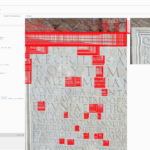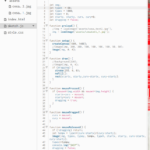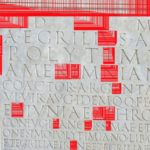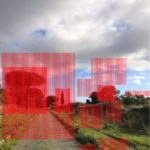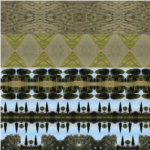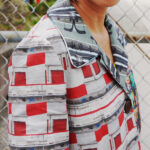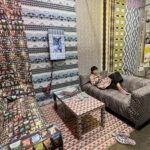Spolia
Elise Co is a Professor in Interaction Design and Graduate Media Design Practices at ArtCenter College of Design. She is the recipient of MADWORKSHOP’s 2023 Affiliated Fellow sponsorship, representing ArtCenter at the American Academy in Rome.
- Designers:
- Elise Co
2023 AAR Affiliate Fellow - Project Type:
- Fellowships
“My research proposal for Rome was to investigate the city as a material: something with the potential to be further manipulated, not yet in “final” state, but with properties of intrinsic form or behavior that might be deduced through analysis of experience. How, and what, to experience? How to analyze? These were purposely left open, to be determined on the ground in Rome and in the community of the Academy, but with technology and textiles as my areas of pre-existing interest and experience.
Once I arrived in Rome, I resolved to stay as open as possible: to go with the flow, wander, and freely follow whatever caught my interest. Days, and then weeks, passed, with lots of activity and exploration, but seemingly little obvious cohesion or direction. The other fellows at the Academy ended up being the strongest forces upon my experience of Rome – I solicited favorite spots, tagged along to other people’s research destinations, and tried to opt in to every opportunity. I found myself taking photos with my always-at-hand phone as a way to keep track of things I noticed.
Over time, some themes emerged:
-
the variety of material surfaces in Rome, as well as buildings or spaces photographed to read as “material swatches;”
-
the juxtaposition of contemporary technology or art, with ancient and historical spaces ;
-
trompe l’oeil as a kind of “virtual reality.”
One of the strongest, with examples almost everywhere, was the ubiquity of repurposed architectural elements: ancient columns being used in Renaissance palazzos; statuary from conquered places installed in monuments and temples; and fragments of older buildings, found during construction of newer ones atop them, as decorative elements. I learned the term for these: Spolia.
At a certain point more than halfway through my fellowship, I had the idea to create a font from the photograph of a Roman marble inscription. I wrote a short software program to test this, and used it to make a birthday card for my husband back in LA. A week or so later, I realized how I might extend it to also allow me to make repeating patterns out of portions of my photographs, something I had been wanting to do for a while. I worked incrementally on this software tool as I continued to pack in as much Rome and Academy experience as I could.
On my last full day at the Academy, a more user-friendly interface was ready. I invited new friends for “Spolia Sessions” and showed them how to use the tool to sample their own photographs and assemble them into new patterns and compositions: to “spoliate” them. I treasure these spoliations, and the conversations we had about them.
Post-Rome, I’ve continued to use my software tool, now called Spolia Loom. I can never predict the results, even though the mechanism operates similarly each time. To spoliate the image of something, is a kind of seeing, a kind of analysis, and a material transformation, that is easy to perform but surprisingly generative. Any photograph can yield beautiful patterns through simple repetition and reflection. Back home here in LA, I’ve centered my summer research (with graduate students in the Media Design Practices program), as well the next phase of my creative practice and research, around the Spolia Loom and the ideas it’s generated for me through use and observation. It feels like just the beginning.”
-Elise Co

